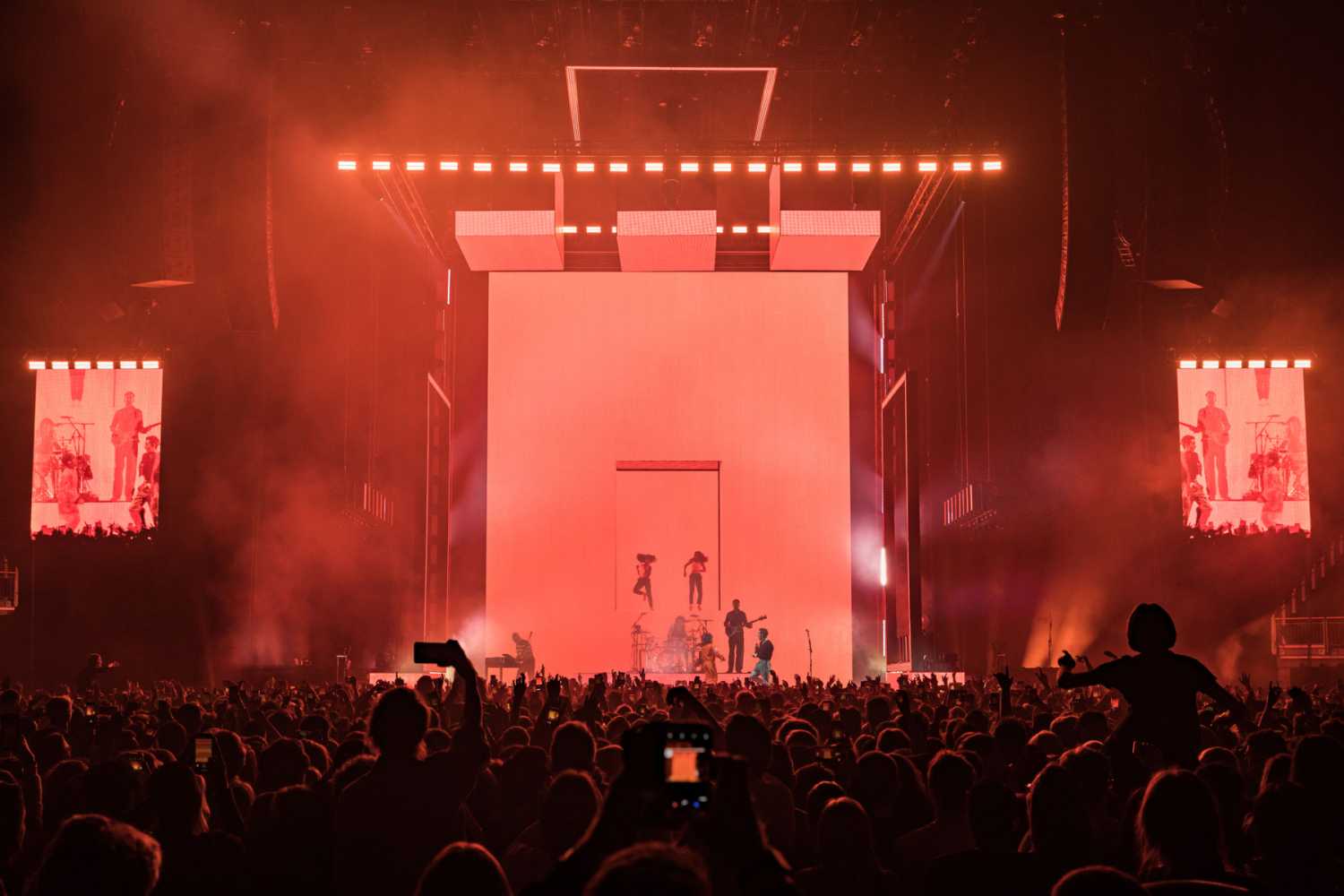d&b KSL on The 1975 ABIIOR Tour 2019
- Details

With drum and bass, ethereal pop and pulsating rock performed in venues ranging from regional halls to big city arenas, the production team required a flexible, powerful and clear sound solution. As a result, the tour is one of the first to take the d&b KSL System on the road.
“Musically, this band is very eclectic, so you really need a sound system that covers all of those genres and styles,” says Jay Rigby, front of house engineer for The 1975. “Lead singer Matty Healy and drummer George Daniel produce their own albums - they know exactly how they should sound live and they have the technical expertise to communicate that effectively.”
Rental house Eighth Day Sound has worked with The 1975 for their past two album cycles. As early adopters of new d&b technology, they collaborated with Rigby to specify the KSL System for this tour.
“One really interesting thing with the KSL,” says Rigby, “is that the vocal range is just incredible - that crossover point between the mid and the high is so smooth; you don’t really hear any horn distortion and the voice is just so smooth all the way through. The fans want to hear every word that Matty is saying and KSL has made it so much easier for every seat in the house to hear just that.”
Whether playing smaller venues such as The Brighton Centre (4,500 capacity) or large arenas such as London’s O2 (20,000 capacity), the striking, art-installation-like set design by conceptual designer Tobias Rylander scales accordingly, and sound follows suit. “We bounce into different sized venues on an almost daily basis and KSL sounds great in all of them,” says Rigby.
Eighth Day Sound’s system engineer Dan Bluhm says of KSL: “It has been a fantastic addition to Eighth Day’s inventory and has fit our needs for The 1975. KSL provides us with a tonal consistency as well as even level distribution from the top, back-of-the-arena seat down to the floor. It has allowed us to provide a similar audio experience to every seat.”
Rigby continues, “There are three things we really noticed with the KSL. The first was the rear rejection. When you stand behind the PA, it’s almost as if it isn’t on. The first time we heard it standing behind the array, I didn’t believe the PA was on - I had to go out front just to confirm that it was. d&b has done a great job making it a true cardioid box, all the way down to the low end.
“The second thing is related to that cardioid performance. Traditionally, with other boxes, you get down to the low mid-range and the cardioid pattern goes away, so you end up with a lot of low mid lobing off to the sides. By solving that, you get the appearance that the box is actually wider than it is, so as you walk around from the main, to where your side hang coverage would normally start, you feel like the coverage continues over further, because the relationship between the low end and the high end stays consistent.
“The third thing is the low mid content in the box. You get a lot more, punchier low end, which in certain situations means you’d be able to use either less subs, or none at all.”
(Jim Evans)
















